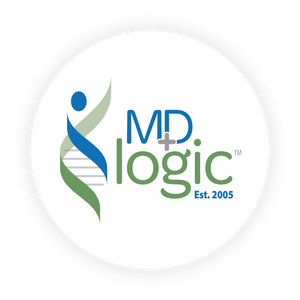Collagen is the most abundant structural protein in the body that plays a crucial role in maintaining the integrity of our tissues and organs (1). It also provides a sturdy framework for our skin, bones, tendons, joints, ligaments, cartilage, and muscles. Collagen plays an important role in the restoration process of the injured tissues and helps in wound healing process (2).
However, as we age, our collagen synthesis by cells decreases significantly and skin becomes thinner, drier, and less elastic. This also leads to wrinkle formation. One more important factor that leads to the destruction of collagen is the ultraviolet radiation. People who are exposed to UVB radiations tend to show low collagen production and age faster (3). Other lifestyle habits like high intake of sugar in diet and tobacco consumption in any form also reduces collagen level in the body (4,5).
Natural production of collagen in the body requires a lot of other ingredients. These components are referred to as co-factors and include vitamin A, vitamin C, manganese, copper, zinc, etc.
Vitamin C is essential for the growth, development, and repair of all body tissues. Vitamin C is important for the maintenance of a normal mature collagen network in humans (anti-scurvy properties) by inhibiting the auto-inactivation of lysyl and prolyl hydroxylase, two crucial enzymes in collagen formation (6).
Deficiency of vitamin A in the body is linked to slowed re-epithelisation, reduced collagen production and stability, and an increased vulnerability of the individual to infection (7). Supplementation of vitamin A may help in reduction of matrix metalloproteinase expression and stimulate production of collagen in both naturally aged and photo-aged skin (8).
Apart from vitamins other important co-factors required for collagen synthesis are minerals like manganese, copper, and zinc.
Manganese is a trace mineral element that is required in the body for activating an enzyme called prolidase. This enzyme helps in providing the amino acid proline which is essential for the production of collagen in skin cells (9).
Copper is also involved in the formation of collagen. It stimulates lysyl oxidase, an enzyme necessary for collagen maturation. Active lysyl oxidase connects collagen fibres to other supporting fibres, assisting in the formation of the structure that supports tissues (10). Furthermore, by enhancing collagen maturation, copper assists in increasing the elasticity of skin and its thickness (11).
Another important mineral that serves as a co-factor in collagen synthesis is zinc. This element is necessary for activating several metalloenzymes in the body. The primary role of zinc is to protect the skin from photodamage by absorbing UV irradiation and restricting radiation penetration into the skin (12). Zinc is required not just for the enzymes that produce type 1 and type 3 dermal collagen, but also for the cross-linking that provides collagen with its durability and stability. Human investigations have revealed that low zinc levels result in lower total collagen levels (13).
It is evident from published scientific reports that deficiency of vitamins and minerals serves as an important co-factor and alter the production of collagen in the body. In the case of naturally aged or photo-aged skin, one must consider taking supplements that combine high-quality collagen with these essential co-factors.
References
- Di Lullo GA, Sweeney SM, Korkko J, Ala-Kokko L, San Antonio JD. Mapping the ligand-binding sites and disease-associated mutations on the most abundant protein in the human, type I collagen. Journal of Biological Chemistry. 2002 Feb 8;277(6):4223-31.
- Sandhu SV, Gupta S, Bansal H, Singla K. Collagen in health and disease. Journal of Orofacial research. 2012:153-9.
- Fisher GJ, Datta SC, Talwar HS, Wang ZQ, Varani J, Kang S, Voorhees JJ. Molecular basis of sun-induced premature skin ageing and retinoid antagonism. Nature. 1996 Jan;379(6563):335-9.
- Vitellaro‐Zuccarello L, Cappelletti S, Rossi VD, Sari‐Gorla M. Stereological analysis of collagen and elastic fibers in the normal human dermis: variability with age, sex, and body region. The Anatomical Record. 1994 Feb;238(2):153-62.
- Tezze C, Romanello V, Desbats MA, Fadini GP, Albiero M, Favaro G, Ciciliot S, Soriano ME, Morbidoni V, Cerqua C, Loefler S. Age-associated loss of OPA1 in muscle impacts muscle mass, metabolic homeostasis, systemic inflammation, and epithelial senescence. Cell metabolism. 2017 Jun 6;25(6):1374-89.
- Boyera N, Galey I, Bernard BA. Effect of vitamin C and its derivatives on collagen synthesis and cross‐linking by normal human fibroblasts. International journal of cosmetic science. 1998 Jun;20(3):151-8.
- Ather S, Harding KG, Tate SJ. Wound management and dressings. InAdvanced textiles for wound care 2019 Jan 1 (pp. 1-22). Woodhead Publishing.
- Varani J, Warner RL, Gharaee-Kermani M, Phan SH, Kang S, Chung J, Wang Z, Datta SC, Fisher GJ, Voorhees JJ. Vitamin A antagonizes decreased cell growth and elevated collagen-degrading matrix metalloproteinases and stimulates collagen accumulation in naturally aged human skin1. Journal of Investigative Dermatology. 2000 Mar 1;114(3):480-6.
- Muszyńska A, Pałka J, Gorodkiewicz E. The mechanism of daunorubicin-induced inhibition of prolidase activity in human skin fibroblasts and its implication to impaired collagen biosynthesis. Experimental and Toxicologic Pathology. 2000 May 1;52(2):149-55.
- Harris ED, Rayton JK, Balthrop JE, DiSilvestro RA, Garcia-de-Quevedo M. Copper and the synthesis of elastin and collagen. InCiba Foundation Symposium 1980 Jan 1 (Vol. 79, pp. 163-182).
- Pickart L. The human tri-peptide GHK and tissue remodeling. Journal of Biomaterials Science, Polymer Edition. 2008 Jan 1;19(8):969-88.
- Mitchnick MA, Fairhurst D, Pinnell SR. Microfine zinc oxide (Z-cote) as a photostable UVA/UVB sunblock agent. Journal of the American Academy of Dermatology. 1999 Jan 1;40(1):85-90.
- Fernandez-Madrid F, Prasad AS, Oberleas D. Effect of zinc deficiency on nucleic acids, collagen, and noncollagenous protein of the connective tissue. The Journal of Laboratory and Clinical Medicine. 1973 Dec 1;82(6):951-61.





